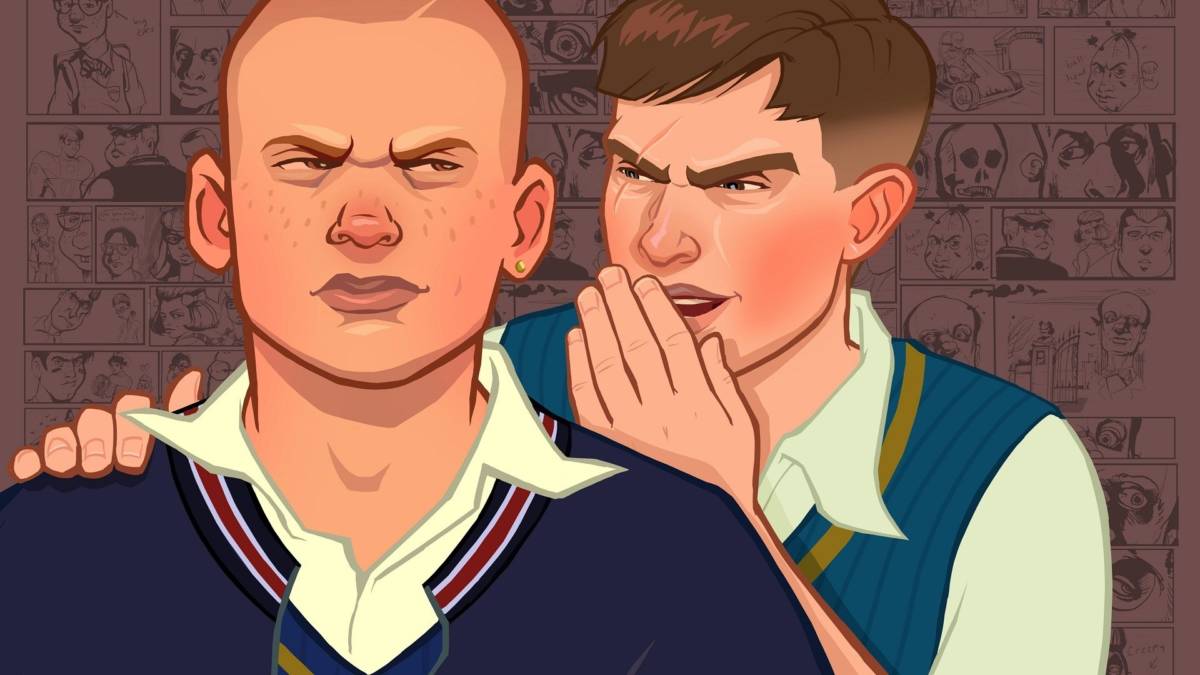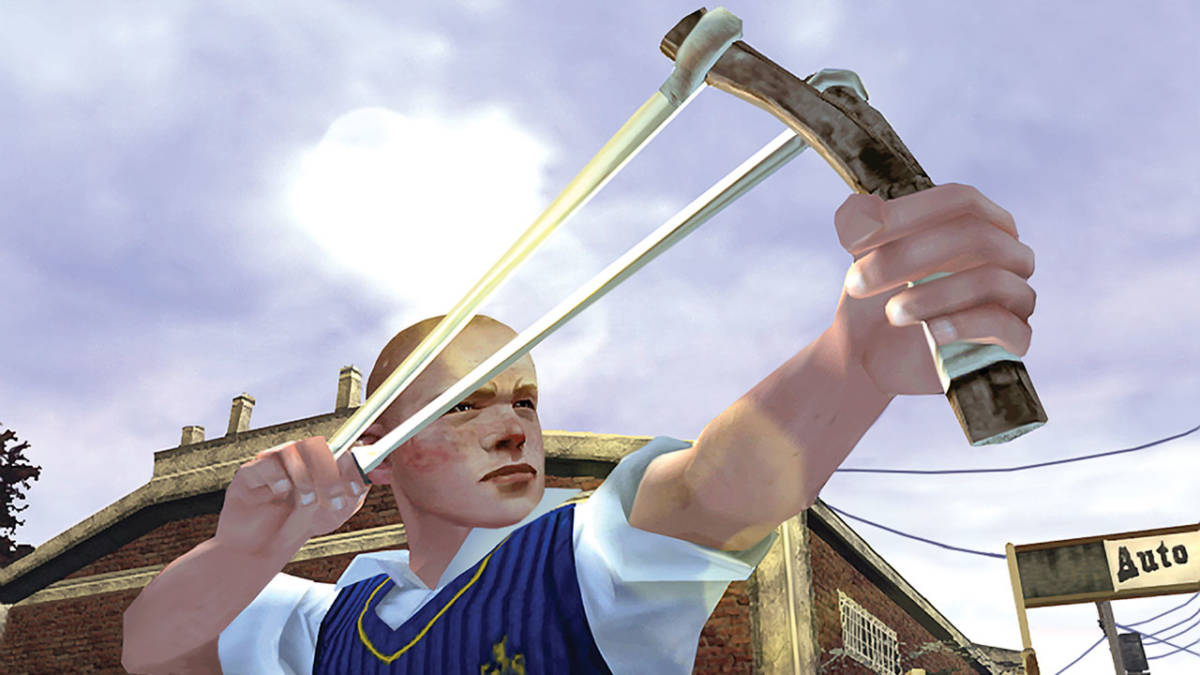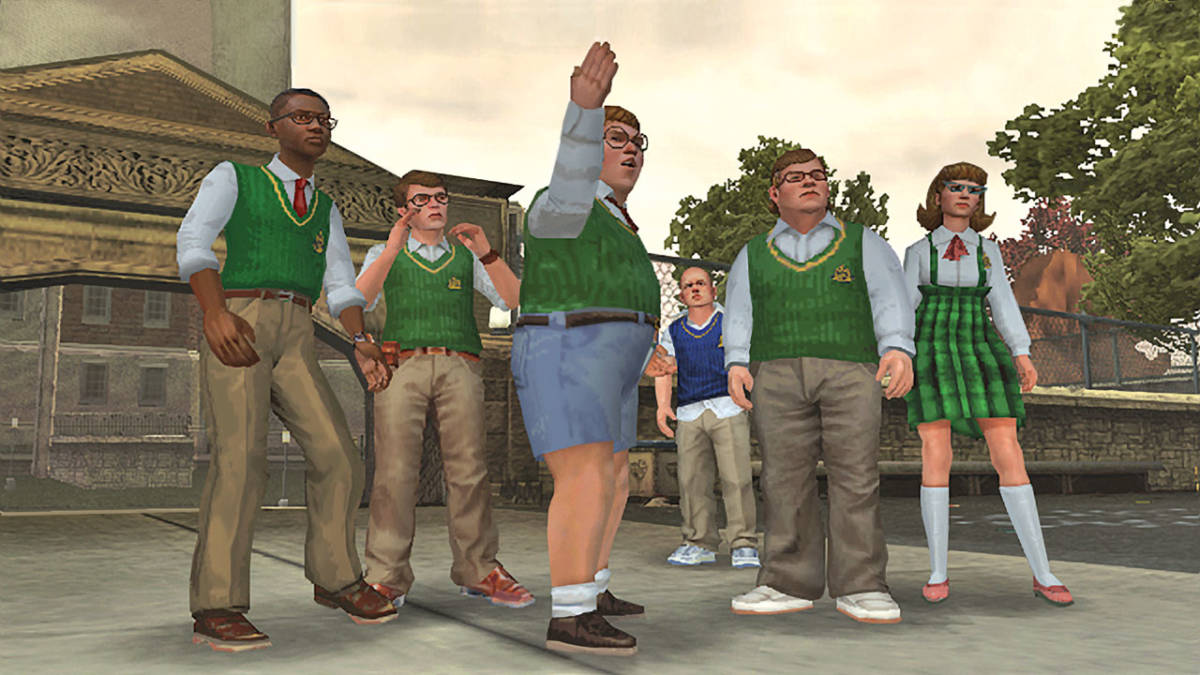I found myself at a bit of a video game crossroads over the holiday break. Do I play one of the many amazing games I missed out on over the course of 2017, or do I play a decade old PS2 game and hope that my rose-tinted spectacles wouldn’t shatter?
That game was Bully (known in the UK as Canis Canem Edit), down to £4.99 in the PlayStation Store. I had sworn off playing PS2 Classics on the PS4 ever since I picked up Star Wars: Bounty Hunter and found that what I had fallen in love with as a child wasn’t that great. Admittedly, I also thought that Attack Of The Clones was amazing when I first watched it, so clearly younger me was a total idiot.
Things weren’t exactly endearing to begin with; the old audio peaking to the point of distortion in the opening cutscene made me instantly want send Jimmy to military school and be done with him. Once I was the newest student at Bullworth Academy, however, I was quickly enthralled, just as I was when I first played it.
Bully obviously hasn’t completely withstood the ravages of time. Character models are a little basic in terms of animation, looking like Joan Rivers after her 495th botox injection, but Rockstar’s distinctive art style managed to carry me past caring. There also some irritating bugs that occasionally wouldn’t let me get on a bike or lock-on to enemies, but considering how many modern games have far more egregious flaws, it doesn’t seem quite so bad.
After my eyes adjusted to the lower polygon counts, something became apparent pretty quickly. Bully is a packed game.
There’s so much to see and do in and around Bullworth Academy that I am doing stuff I can’t remember from when I was young. There are the standard mini-games for school lessons that are simple but huge fun, even if shop class seems to be totally rigged against me. These usually consist of button prompts or puzzles, such as the interesting way you paint pictures by essentially playing a more restrictive game of Pac-Man. If you wanted to play Bully straight, you could almost be a star pupil and concentrate fully on academia. Of course, you could also be a model citizen in Grand Theft Auto and wait at the red lights instead of rocketing around and causing mayhem, but where’s the fun in that?
Jimmy Hopkins is a little bastard, so the best way to play is to be a little bastard. You can deal with all the cliques as you see fit, but I particularly enjoyed living out my fantasies of being the Nerd Avenger and beating up any bullies, revelling in giving them a square kick to the balls. That being said, the combat system wasn’t revelatory at the time and it’s creaking substantially over ten years later. Targeting is more cumbersome than it should be and there are some gruesome glitches when you try to finish off an opponent when they’re on their way to the ground. Still, it’s satisfying when the combos land and you pull off an illegal MMA move to put the bullies away.
Compared to other open-world games, Bully doesn’t always feel completely open, due to the obvious fact that you should be at school rather than throwing stink bombs at hobos. Jimmy can only stay awake until about 2 in the morning, so if you want to balance everything, whether that’s attending classes or completing missions, you’ll need to plan everything out. Or, if you see fit, you could just throw snowballs at everyone during the Christmas section of the game, kick people in the face with footballs, or romance the girls on campus while trying not to grimace at the resulting sound effects – I think someone really needs to have a word with the game’s foley and VO artists.
Above all else, however, what continues to amaze me about Bully on my nostalgia trip is how much variety and depth it provides, even if it’s a playground that you can’t be in 24/7. Its world may be smaller than many of its peers, but it’s one of the best examples of quality over quantity you can find.
With the rise of the open-world came developers’ obsessions with creating acre after acre of playspace with absolutely nothing to do, or at least nothing compelling. Ubisoft are the main targets of criticism for this shift, opting for towers and mundane collecting over anything of any worth for the sake of having something to tick off a list, but the best example is actually another Rockstar property.
When Grand Theft Auto V dropped (and Rockstar’s ambition to create new games with it), many were overawed by the scope and scale of the updated Los Santos. It’s easy to see why: it’s certainly a living world, the dynamic chatter of bystanders and random events provided a veneer of authenticity to make the player feel like they’re there, but beneath its shiny surface, GTA V is rather shallow. It’s really not even the most replete of the Los Santos experiences with San Andreas having far more to do outside of the main missions, evidenced by jetpacks being limited to the Doomsday Heist online-only event.
But Bully might have all of them beat. Just in Bullworth Academy itself, you can greet people or harass them, develop relationships, take classes, build a bad reputation with the principal, learn new moves, buy clothes, and more. Outside of Bullworth and in the surrounding areas, there’s even more scope, allowing you to take jobs to deliver papers and mow lawns, but you can also take part in bike races, change your hairstyle, spray graffiti on buildings, go to the carnival and try your hand at mini-games; the list goes on.
It’s clear that a denser, smaller world means that there are fewer variables to have to deal with from a developer’s point of view as opposed to the huge scale of Los Santos et al, which may explain why some of the biggest open-worlds are the most sparing in terms of fulfilling content. However, as games like Bully and even last year’s Yakuza 0 prove, bigger is not necessarily better. As developers continue to compare penis sizes with increasingly girthy open-worlds, maybe it’s time that some looked to the past for inspiration and remember that size doesn’t always matter.
Some of the coverage you find on Cultured Vultures contains affiliate links, which provide us with small commissions based on purchases made from visiting our site. We cover gaming news, movie reviews, wrestling and much more.






